
Review: Bose DeltaQ ShowMatch Touring PA
Bose Professional has thrown its hat back into the concert touring market with this mid-size line array. Who wants it and why?
Review:/ Christopher Holder
Talk to any sound guy over the age of 50 and they’ll regale you with tales of Bose 802. Bose 802s for days. Rental companies with sheds of Bose 802. Hanging strings of Bose 802 as long as the Rialto North Tower.
These tales are now rooted in live sound’s dark ages when Bose last had a significant presence in live touring sound.
Since then Bose Professional has played in the permanent installation space. More than that, Bose has in many ways been the dominant installation speaker. Its banana speaker (the 502) has for years been a defacto standard fixture of airports and other public spaces, for example.
Five years ago, Bose made a significant entrance back into the main PA market with RoomMatch. Designed for permanent installations, RoomMatch comprises 42 different boxes that provide various dispersion characteristics. The idea is to more capably match the array’s dispersion pattern with the geometry of the room it’s filling. And given it’s a job that only needs to be done once (as a permanent installation) there’s no advantage in having a once-size-fits-all full range line array element, it’s better to have the luxury of many.
FROM ROOM TO SHOW
The other significant difference between RoomMatch and other line source systems is in just how physically large a number of the RoomMatch modules are. The largest is the 120° x 60° behemoth — 60° coverage in the vertical! The hero is the HF device and Bose manifold. With the 120° x 60° element venues that don’t need 110dB+ levels in the room can attain excellent/even coverage with one box instead of, say, four. Conversely, RoomMatch can allow you to leverage more boxes to provide you with more level and greater degree of pattern control — it all depends on your budget and SPL requirements.
RoomMatch is classic Bose. While Bose has plenty of haters, mostly I think people resent Bose’s marketing slickness in the domestic world; almost a case of ‘how dare they play in the pro sector!’ Whatever you think of the sound of Bose professional product there’s no doubting the company values its R&D and engineering. RoomMatch could have been done far more parsimoniously and cynically; it wasn’t. It’s certainly not a slick, style-over-substance solution to the install problem, far from it… the Bose RoomMatch whiteboard markers were most definitely in engineering’s hands, not marketing/PR’s.
As far as I can tell, RoomMatch’s success has been solid without being world-beating. It has given installers loyal to Bose another string to their bow — allowing them to spec the theatre as well as the foyers of a venue. I’m not entirely sure it’s had those ambivalent or hostile to Bose reaching out to demand a demo.
One piece of RoomMatch feedback Bose has been getting from contractors is the larger proportions of RoomMatch have been an occasional sticking point; and it’d be good to have a streamlined rental version.
MORE INFO
Price
$5895: full-range module
$5425: SMS118 sub
Bose Professional:
1800 023 367 or pro.Bose.com
Pros
Flexible dispersion characteristics
Well priced
Sounds accomplished straight out of the box
Cons
Could be easier to switch out waveguides
Tricky to quickly determine which waveguide is installed
Summary
Five years ago Bose Professional re-established its PA credentials with RoomMatch and now it hits the road with ShowMatch. Well engineered, versatile and priced right, ShowMatch won’t immediately jump onto Australian rock ’n’ roll tech riders but will soon be a favourite in the AV staging sector.


MATCH MAKER
ShowMatch is Bose’s response. It takes RoomMatch’s philosophy and refines it into an everyday arrayable, truckable concert PA system.
ShowMatch comprises three full-range loudspeaker models (5/10/20° vertical) in a compact two-way design, that includes four improved Bose EMB2S compression drivers and two Bose eight-inch neodymium LF devices. Each model ships with two sets of field-changeable horizontal waveguides for narrow or wide pattern control. An additional horizontal waveguide can be purchased separately. To change a waveguide you need to remove the grille and undo four screws. (The waveguides come in two sections, which means you can have asymmetrical horizontal dispersion patterns.) It’s not something you’d do once you’ve arrayed the system but something taken care of in the shed after you’ve mapped the venue in Bose Modeller. In other words, the waveguide options will reward the conscientious operator. As an aside, it would have been great if Bose could make it outwardly obvious which waveguide is installed in an element. Funktion-One colour codes its boxes, perhaps Bose could have some small (coloured?) part of the waveguide protruding from the grille to make the box easy to interrogate.
Removable rigging-guard/handle side caps allow ShowMatch modules to be suitable for both installation and portable applications.
WHAT’S DELTA Q?
Bose’s term DeltaQ, combines ‘Delta’ or Greek for ‘change’ and ‘Q’ for directivity. Using ShowMatch’s combinations of three vertical pattern boxes and three waveguides for a variety of horizontal control, system engineers have more ways to physically match the PA to the room.
DeltaQ offers the ability to build traditional (J-Array or Constant Curvature) and DeltaQ array configurations, allowing both portable/rental and installed applications to deploy selectable coverage control. ShowMatch arrays are capable of generating a maximum SPL of “up to 145dB (peak)”, or when SPL is less critical, they offer the ability to achieve full coverage with fewer modules for significant weight, height and cost savings.

FIT FOR LAUNCH
ShowMatch is a big deal for Bose. Certainly the carefully-choreographed worldwide launch was an impressive thing to behold. Australia was the last leg of a tour that saw Bose take over a venue, bring in a hot live band, and allows sound professionals to hear the system perform without any apparent smoke and mirrors.
Well-regarded Australian sound engineer Anatole Day was engaged to babysit the rig for the Melbourne and Sydney dates. AV Asia Pacific last caught up with Anatole while he was on a Guy Sebastian regional tour. What I like about Anatole is he’s a pragmatist and he trusts his ears and instincts. Anatole is just the kinda pro that Bose is hoping to speak to: he loves mixing on the million dollar rigs whenever he can but will take a new PA as he finds it — he can see past the badge.
The demo was quite impressive. The system comprised seven elements a side and four single 18-inch subs a side in an end-fire configuration. (A front grille-mounted NL4 connector on the sub enables easier wiring for cardioid configurations.)
We were assured the system was set flat, with only some low-Q 4-5kHz gently removed by Anatole to slightly smooth out the rig, which was oversized for the room at Chapel Off Chapel. They’d run the same-sized array at the Sydney event, which was held in a much larger bay at Carriageworks. There Anatole said the top end was spot on, and he only took out a little low mid to offset the room’s natural buildup. So, ‘out of the box’ ShowMatch sounds like a proper line source concert PA.
As I mentioned earlier, the HF units are the heroes. The four EMB2S compression drivers are matched to a Bose proprietary manifold (pictured right). What makes them special is their wide frequency range — from 18kHz all the way down to 300Hz. It’s an impressive feat. Crucially the EMB2S takes care of all the vocal frequencies. And this has been one of Bose’s key design philosophies since the 802: make the vocal the hero, and make it easy for the sound person to lift the vocal out of the mix. The EMB2S is the sound of ShowMatch. Everything rests on its performance and it’s a winner: efficient, loud and still sweet-sounding at lower levels.
WHO’S FIRST?
Bose isn’t the first to market when it comes to preaching the variable dispersion gospel. Some 10 years-plus ago L-Acoustics released Kudo which had/has adjustable dispersion vanes. More recently the variable dispersion cat can be skinned in software, with systems such as EAW’s Anya and Martin’s MLA doing some fancy footwork in DSP to match the rig to the room.
My gut feeling is that the ShowMatch’s DeltaQ variable dispersion smarts (which has been so pivotal to the RoomMatch success) won’t be the ShowMatch dealmaker for Bose — it’s a cool feature, but not one that small to mid level, shoot-from-the-hip, rental companies will be exploiting on most jobs. (That said, ShowMatch’s neat low profile design will ensure it finds its way into plenty of installations where the DeltaQ flexibility will be used to the max.)
So if my surmising is well founded, what’s ShowMatch got going for it? Easy. It’s a properly engineered, well resolved, mid-size line array that’ll take care of a wide range of gigs. Fly it (up to 24 in an array), ground stack it, put it in a constant curvature array (for pseudo line array performance) if you have to, hang it in a conventional J array for that outdoor festival, or get your geek on and design the best DeltaQ array to tame that tricky (or not so tricky) room.

SECOND OPINION; FIRST IMPRESSIONS
FOH Engineer, Anatole Day, offers his thoughts on the Bose ShowMatch.
“First impressions? Pretty amazed actually. Straight out of the box it sounds good.
“It rigs easily — two guys can get it in the air, no trouble. That may not be the first thing you think of with a new PA but as a touring engineer, a systems engineer, as a rigger, it’s vitally important that it goes up quickly and easily.
“After flying the PA I began playing tunes I know well and it was good, I was impressed.
“The things I was expecting, and inherent in many new PAs were not there: not a lot of barkiness or harshness in the HF and not too boxy in the low mids either — nice and clean across the board.
“We were giving it some good level at times. It was a good test in Sydney in a large room. We were sitting on 110dB at the console and it was doing that easily. We could have gone to 120-125dB without it anywhere near limiting. Personally I don’t want to get near that sort of level but if you have lots of elements rigged high and you’re asking a lot of it, well, it’s nice to know the PA and the amps can handle it.
“Bose has moved the crossover point away from the vocal range. A lot of PAs have a crossover point in that 1-4kHz vocal range and you often get a dip or some summation around that crossover point. ShowMatch doesn’t have that problem. It sounds simple but talking to engineers that know better, it’s a hard thing to achieve.
“I like the fact that Bose has done its demo with a live band. Almost any system will sound good with particular tracks chosen to highlight certain positive attributes of a PA. But no matter how hard you drive a track you don’t get the same SPLs as you do from a live band, with open mics and instruments. It gives people a much better idea of what this PA is capable of.”
THE APPEAL
Finally, in a market like Australia (small and tribal) the question isn’t necessarily “is the PA any good?”, it’s “who’s the customer?”. I don’t see too many rock ’n’ roll rental companies sticking their necks out to gobble up the first shipment of ShowMatch — until ShowMatch makes it onto technical riders that’s unlikely. But for rental companies that do most of their work on corporate and AV gigs, Bose ShowMatch is a very appealing choice.
And, finally, the real kicker. The price: it’s keen. Interestingly, Bose hasn’t built a road-ready amp. They’re recommending the Powersoft X Series (specifically the X8 Dante model), probably in recognition that Powersoft’s price/performance is hard to beat. It’s always difficult to price a ‘system’ as such (given the myriad permutations) and hard to get an ‘expect to pay’ price on something like this but I’ll let you do the maths on what a RRP module price of ~$5900 might mean to you if you’re ‘in the trade’. Definitely at a price point that gets the cogs turning.


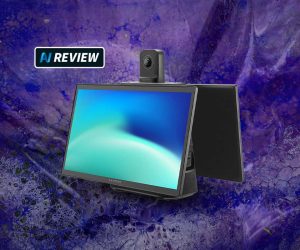


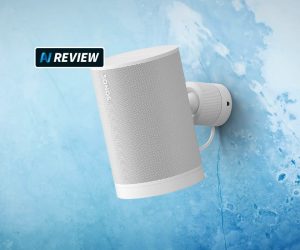

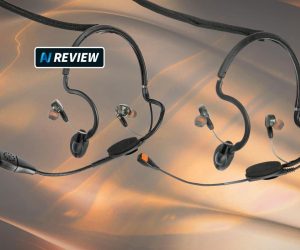
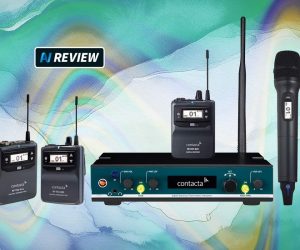



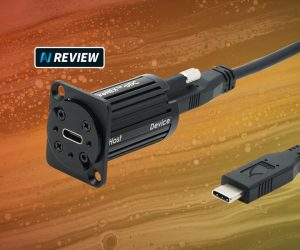


RESPONSES